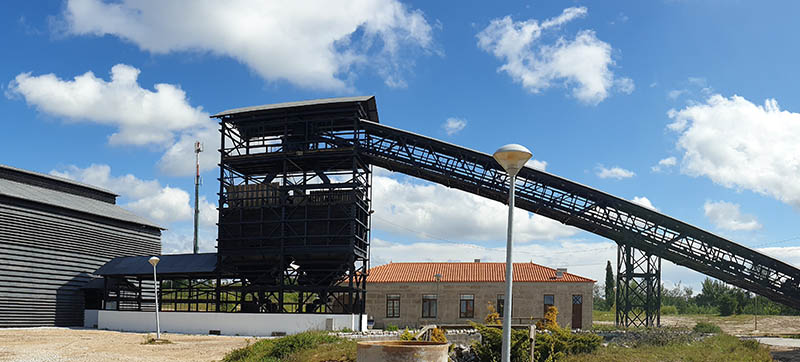Situated in the village of Canas de Senhorim, part of the municipality of Nelas in the Viseu district of central Portugal, the former mining area of Urgeiriça has undergone a process of environmental remediation. It began in 2005 with work on the tailings dam – an embankment used for storing the often toxic by-products of mining operations. Based on environmental studies, further actions were carried out over several stages. The final phase, backed by EU funding, is scheduled for completion in September 2020.
Former mining area of Urgeiriça, Portugal cleaned up
- 17 June 2020
The project integrates a set of interventions to complete a process for mitigating the ecological consequences of the mining and subsequent abandonment of a site considered a national priority, due to the extent and range of local environmental impacts associated with ionising radiation.
The last phase of the remediation entails completion of the chemical and radiological decontamination of the soil and subsoil around the buildings and historically significant equipment in the complex, and structural work to stabilise the buildings.
In addition, the collection of leachate – liquid containing harmful substances that can enter the environment by percolating through solid matter – and its transport to the new dam area of the site has been improved. This will ensure that contaminated mine water is adequately treated prior to discharge.
Treating contaminated water
Improvements have been made to the collection of contaminated subsurface flows and seepages of water on the left bank of the Pantanha stream after cleaning. This water is sent to a new mine water treatment plant, which uses both active and passive methods to remove contaminants.
Passive treatment systems provide a controlled environment in which natural chemical and biological reactions can occur. Their use lowers operating costs as, unlike active systems, they do not consume energy. Moreover, they need less maintenance and use less hazardous chemicals than active systems. Costs are reduced by using automated equipment and software to monitor and manage treatment parameters remotely.
Further features of the final phase are the removal of sludge deposits detected around the new dam and the building of a structure to hold this sludge and other material resulting from the decontamination.
Lower health and environmental risks
Contaminants from abandoned mines pose a threat to public health and the environment and require urgent mitigation measures. In 2001, Portugal gave the state-owned company Empresa de Desenvolvimento Mineiro, responsibility for the environmental remediation of all former mines.
This decision created an innovative management model in which the state assumed an active role in the remediation process. It ensured that all actions in the process would be carried out coherently, based on best available knowledge and practice.
Remediation of the Urgeiriça site is of particular importance given its location in a built-up zone. A total of 13.42 hectares of land are being cleaned up, which should reduce exposure to health and environmental risks, including risks linked to contamination of soil, surface water and groundwater, for around 9 800 people. Furthermore, the area will be brought into line with European Atomic Energy Community standards for protection against radiation.
Another project aim is to make the area fit to host public activities and events. Accordingly, the wider community has been involved from the outset. Local residents are already using some parts of the complex for various purposes. Following completion of the work, continuous monitoring and maintenance will keep the site safe in the long term.
Total investment and EU funding
Total investment for the project “Environmental rehabilitation of old Urgeiriça mining site – final phase” is EUR 13 237 032, with the EU’s Cohesion Fund contributing EUR 9 631 587 through the “Sustainability and Efficient Use of Resources” Operational Programme for the 2014-2020 programming period. The investment falls under the priority “Environmental protection and promotion of resource efficiency”.

